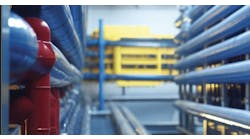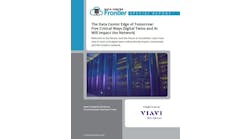This concludes our article series on how to choose the right diesel backup generator technology.
Data is king. That’s the message that the IT business have been sending for the last few years because of all of the new ways to utilize the information that businesses collect, especially with the advent of AI and the need for huge data sets to properly train them. And there is literally no place that has a larger collection of business data than the data center. So, making sure that data is properly protected is a significant part of maintaining the data.
The right backup power generator is an integral part of protecting the data in your facilities. When building a data center, you are likely conducting power capacity planning as part of the process. The information you derive is one of the primary considerations for your backup power generation sizing. But it’s not the only requirement, you need to consider potential scalability and growth issues. Backup generators alone are just a component of the power provisioning, that includes multiple redundant power paths, uninterruptible power supplies, power conditioning, surge protection, and the transfer switching that handles failover. But everything is dependent on a continuous supply of power.
Many current data centers are designed to provide more power than they start with, so your backup power needs to be selected and configured in such a way that scaling that power source isn’t something that ends up being a roadblock in the future development of the site. It is a good idea to plan for higher rack densities and greater power demand, but if your backup power (along with your cooling) can’t scale to support the increased load, you simply end up with a smaller number of racks drawing the same amount of power as was originally provisioned. This isn’t the only potential impediment to data center growth, but if factored in from the beginning, it won’t become an issue.
Redundant power is another consideration. If your plan is to help assure high availability by offering 2N or N+1 backup power sources, these too need to be able to scale with the growth of the facility.
And even when you think you’ve got the sizing and availability of backup power figured out, there is still work to do. Once there are IT workloads up and running in the facility it is time to start conducting load analysis. By monitoring power usage across equipment and time you gain insight into the power demands and consumption patterns of the data center on a real-time basis. The information acquired will allow you to guarantee that your backup power supply meets the ongoing demand of the data center.
Download the full report, Choosing the Right Technology for Diesel Backup Generators, featuring Kohler, for exclusive content, including tips on how to prepare for the future.







